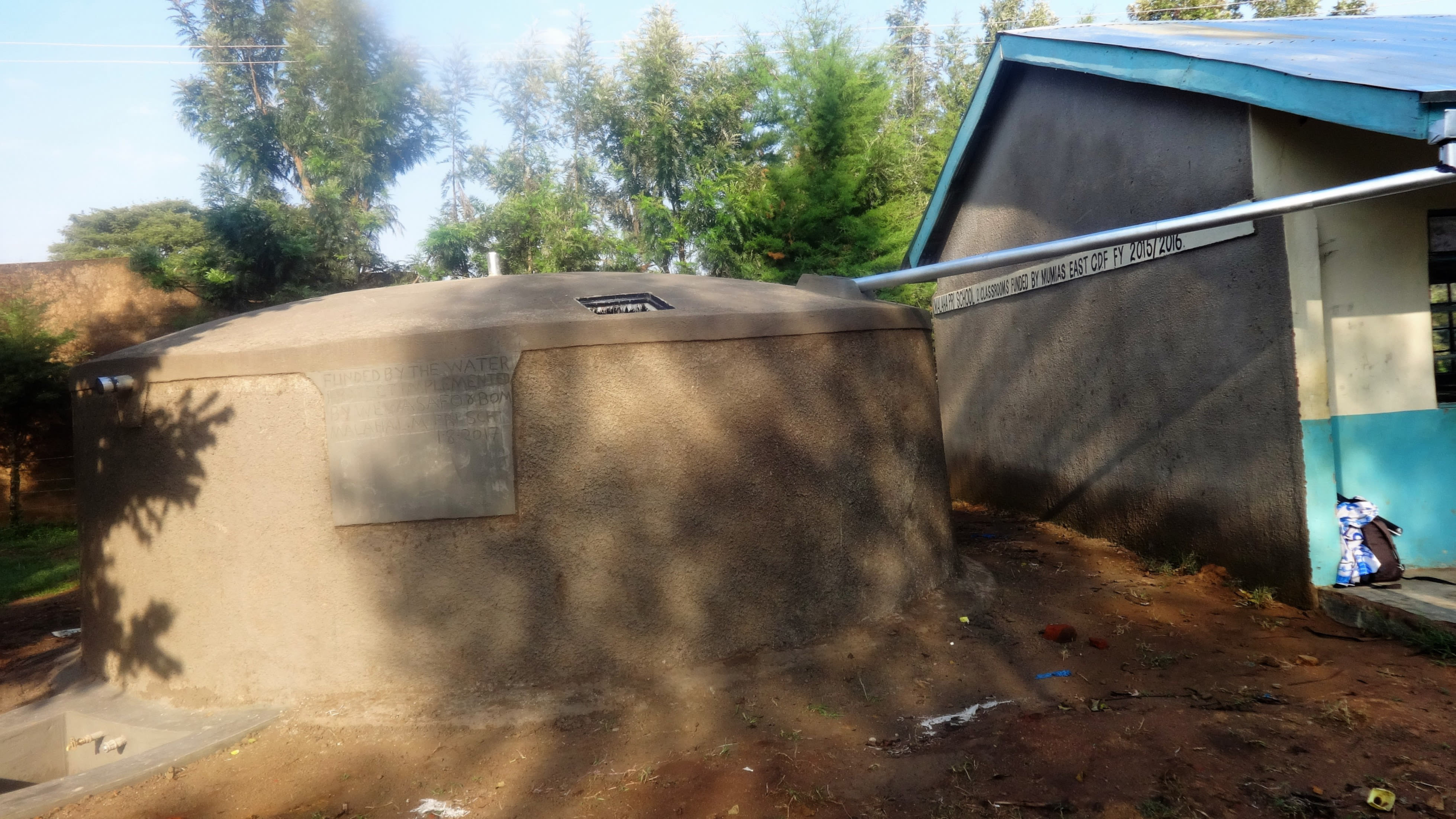This project is a part of our shared program with Western Water And Sanitation Forum (WEWASAFO). Our team is pleased to directly share the below report (edited for clarity, as needed).
Welcome to the School
Malaha Primary School was established in 1993, starting with a student population of 167. It is sponsored by the Legio Maria Church. It presently has 857 students out of which 439 are boys and 418 are girls. The ECDE (early childhood development) section of the school has a total of 79 students, out of which 38 are girls and 41 are boys. Malaha Primary School employs a total of 29 teachers with another three in the ECDE section.
(Editor's Note: While this many people may have access on any given day, realistically a single water source can only support a population of 350-500 people. This community would be a good candidate for a second project in the future so adequate water is available. To learn more, click here.)
The school's motto is "Sacrifice Breeds Success." Maybe this is what motivates its students to wake up and prepare for school at 6AM! They walk to school with a jerrycan full of water, which is immediately put to use cleaning classrooms. Students then sit in morning study hall for 30 minutes until normal classes at 8AM. After lunch, afternoon classes stretch until 3:45PM when students play games until they're allowed to return home.
Water Situation
The school has a well but it is not operational; it requires an expensive, major repair to restore it to its proper working condition. Malaha Primary School has a 3,000-liter plastic water tank. which is not sufficient to serve the student and teacher population combined. This is why students must help by bringing water to school every morning.
Since students fill their jerrycan anywhere and anyway possible, it's impossible for us to ensure their water is clean. Many fetch water from the open water source closest to their home, or one along the route to school.
When delivered to school, water meant for drinking is dumped in a 100-liter reservoir, and the rest of the water for cleaning and cooking is left in the students' jerrycans.
When the school uses up water in all of these containers, students must again search for water. They often travel long distances for water that is likely unsafe. After drinking, students miss school suffering from waterborne diseases at home, while their parents struggle to gather the resources to help their children.
Sanitation Situation
The school has a total of 14 latrines out of which two are for teachers and visitors, leaving ten for the students. Out of the ten toilets for the students, four are for boys and six are for the girls. The ECDE section has 2 toilets. There is a shortage of latrines, resulting in pupils wasting a lot of time lining up and waiting during break. And due to water shortage, a good number of latrines cannot be cleaned and thus are not used. Some of the pits are almost full, and others have been condemned. Some even lack doors and the floors are falling apart, presenting danger to these small students.
The school has just one hand-washing facility with a stand, but has done a good job improvising a temporary hand-washing container as well.
Plans: Hygiene and Sanitation Training and Hand-Washing Stations
Training will be held for two days. The facilitator will use PHAST (participatory hygiene and sanitation transformation), ABCD (asset-based community development), CTC (child to child), lectures, group discussions, and handouts to teach health topics and ways to promote good practices within the school. The CTC method will prepare students to lead other students into healthy habits, as well as kickstart a CTC club for the school. This CTC club will oversee the new facilities, such as hand-washing stations, and make sure they are kept clean and in working condition. The two hand-washing stations will be delivered to the school, and the club will fill them with water on a daily basis and make sure there is always a cleaning agent such as soap or ash.
Headteacher Dominic Barasa is very excited about the opportunity for training sessions. "I am eager to see the commencement of the project. I reaffirm my commitment to contribute what was required from the school by availing the school community for the training and put in place measures to ensure management and maintenance of the facilities," he said.
Plans: VIP Latrines
Two triple-door latrines will be constructed with local materials that the school will help gather. Three doors will serve the girls while the other three serve the boys. And with a new source of water on school grounds, students and staff should have enough to keep these new latrines clean.
Plans: Rainwater Catchment Tank
A 50,000-liter rainwater catchment tank will help alleviate the water crisis at this school. The school will also help gather the needed materials such as sand, rocks, and water from the spring for mixing cement. Once finished, this tank can begin catching rainfall that will be used by the school’s students and staff. Students will no longer have to carry water every morning or leave class to search for more.
We and the school strongly believe that with this assistance, standards will significantly improve. These higher standards will translate to better health, better lives, safer and happier students, and better academic performance!

 Rainwater Catchment
Rainwater Catchment
 Rehabilitation Project
Rehabilitation Project


































